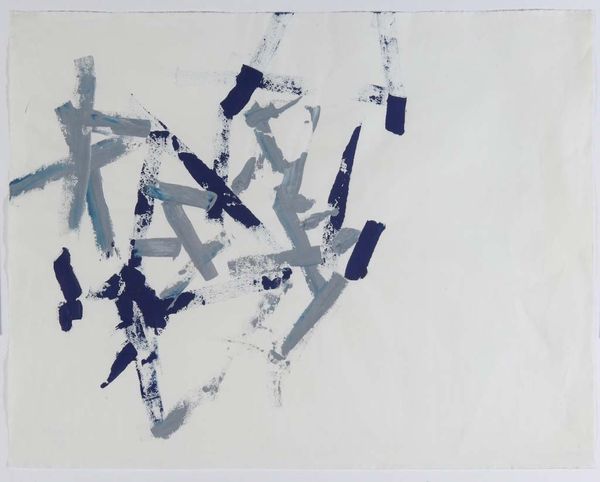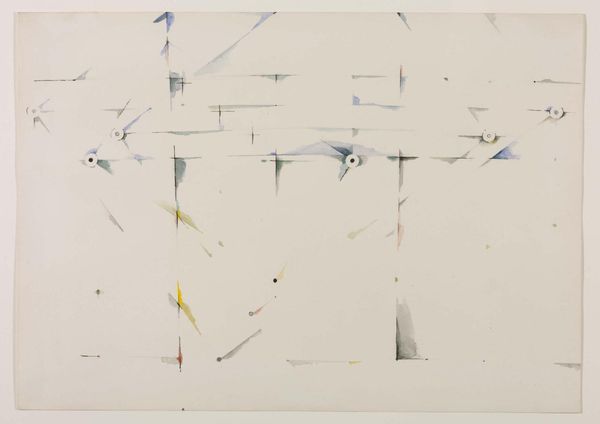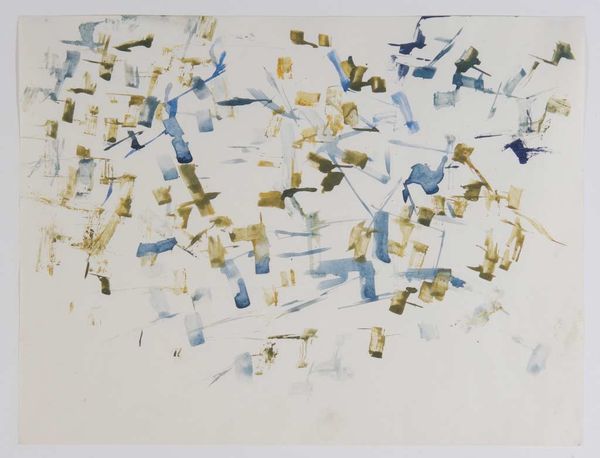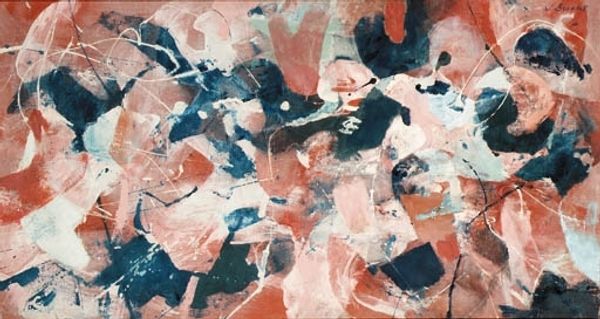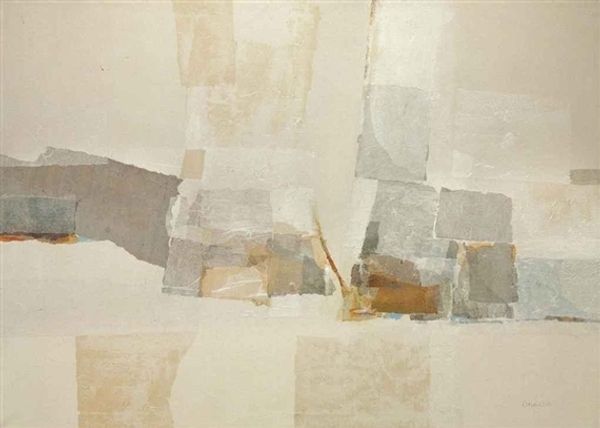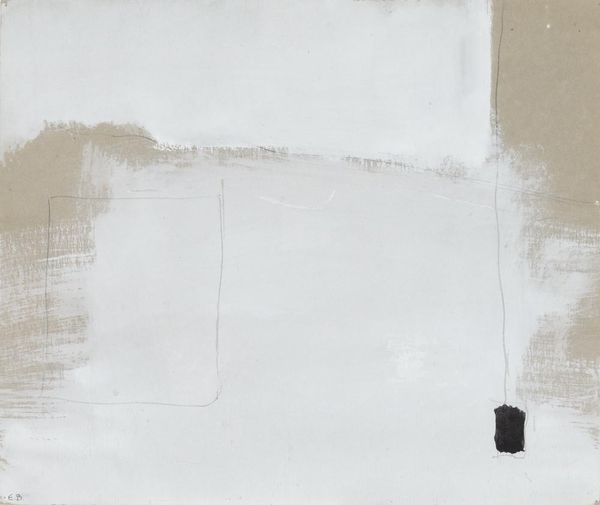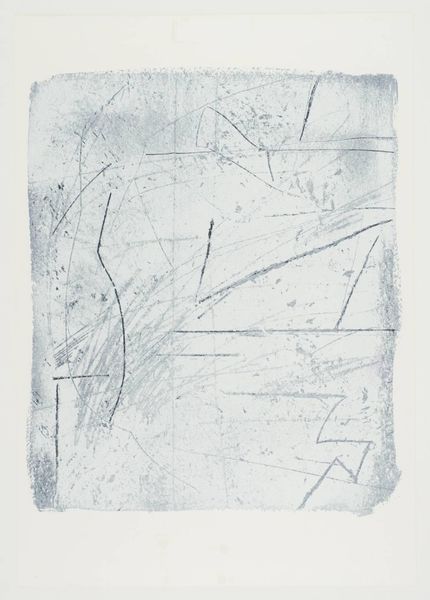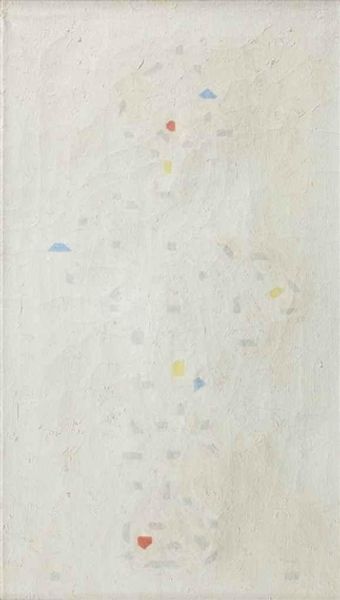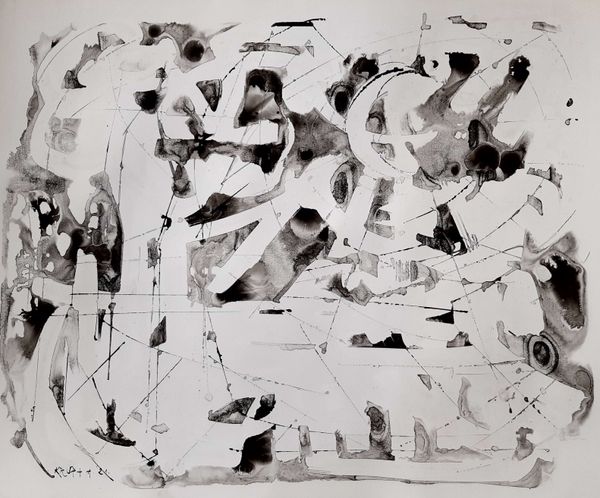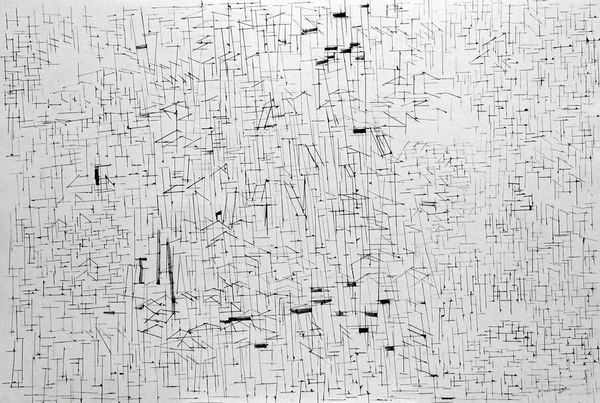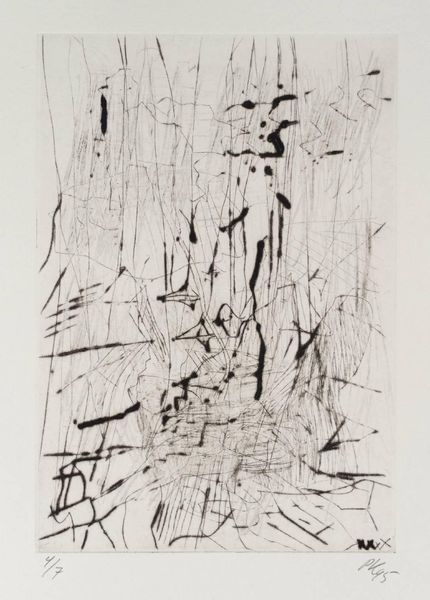
Copyright: Charlotte Posenenske,Fair Use
Curator: Looking at this stark, dynamic piece by Charlotte Posenenske, created in 1960 and titled "Untitled (Free Structures)", what are your initial thoughts? Editor: It feels… fractured. There’s a tactile roughness, an almost brutal application of paint, contrasting with a limited monochrome palette that evokes construction more than fine art. It makes me think of building sites. Curator: Posenenske, even at this early stage of her career, engages in a dialogue that questions traditional aesthetic conventions. Consider the German Expressionist context - the search for new modes of representing emotional experiences during post-war anxieties. How does that inform what we're seeing here? Editor: Well, this prefigures her move away from conventional art toward industrial production. I can't help but focus on the visible labor; the thick impasto. It doesn’t hide the making, and the scale seems to point more towards industrial surfaces rather than intimate art objects. Curator: Exactly. We can even think of the 'free' structures referenced in the title as referring to systems of capitalist exchange. How might Posenenske, a woman working in a male dominated field, negotiate these issues through this use of raw materiality and stark geometries? Editor: Maybe by asserting control over the material itself. The monochromatic application minimizes aesthetic distraction, shifting the focus entirely to the process of production. It seems like a deliberate move, emphasizing how form can arise from basic materials through the artist's work. Curator: Certainly, this is an interrogation of labor, the art object, and their intertwined societal values, deeply embedded in postwar Europe, also it opens important dialogues concerning the relationship of the artists working life and the political landscape around the matter of German identities after the trauma. Editor: And that makes the austerity feel very purposeful now, rather than simply a limitation of the medium. This work serves not only as a moment to contemplate but to analyze, connecting us materially and intellectually. Curator: It allows a necessary deconstruction of assumptions we place on both the role of art and who creates art. That remains incredibly pertinent for our contemporary moment.
Comments
No comments
Be the first to comment and join the conversation on the ultimate creative platform.
